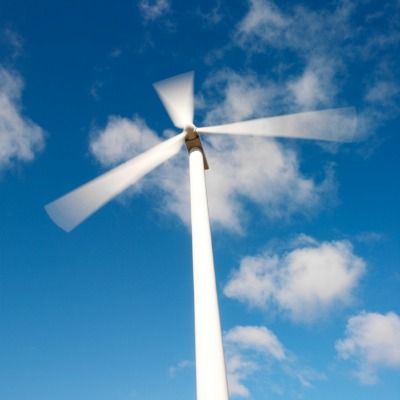 In recent years, there has been a slow shift from collective pitch control (adjusting the blade angles on all three blades equally at the same time) to individual pitch control (IPC), with each blade adjusted individually to achieve a steady and balanced rotor rotation.
In recent years, there has been a slow shift from collective pitch control (adjusting the blade angles on all three blades equally at the same time) to individual pitch control (IPC), with each blade adjusted individually to achieve a steady and balanced rotor rotation.
Enercon was the first to commercialize this approach, and others are moving in this direction, including Envision and Goldwind. To clarify, most of today's pitch systems are designed with IPC capability in the hardware, given that there are pitch motors and backup systems for each blade. However, due mostly to cost and complexity, the software running the central control systems has not implemented IPC operation. In practice, there are three independent control systems being operated, with a collective pitch algorithm determined by the turbine controller.
As wind blades – and therefore, rotors – have grown in size toward the 100-meter rotor span and above, measurable and impactful differences in wind speed are often observed between the bottom and the top of the rotor span. This is wind shear, or the increase in wind speed over elevation, and some sites experience more or less shear than others.
Collective pitch control is simpler and more cost-effective, but its shortcoming is that optimum blade pitch angles at the bottom of a rotor span may not be the same optimal angle at the top of the rotor span. As a result, the collective rotor can spin very slightly out of balance. Any imbalance in the rotation of the heavy rotor can lead to damaging bending and torque loads on the main bearings, main shaft and surrounding drivetrain.
Most wind turbine vendors produce their control systems in house, and the independent vendors have IPC systems as an option for their turbine offerings. It is not always necessary, especially for lower megawatt-rated turbines with midsize rotors, but it is becoming standard issue for multi-megawatt turbines with large rotors.
The Chinese market, as usual, is more cost-sensitive, and its turbines that are deployed in any one given year are below 2 MW. Therefore, IPC has seen a slower market uptake. One of the concerns with IPC is that there is a perceived tradeoff that constantly adjusting blade pitch in real time, as a blade moves from the top to the bottom of the rotor span, subjects the pitch drive system to substantially more actuation activity. This, in turn, can wear out the pitch systems and gearing hardware faster than collective pitch systems that may only actuate a change in blade angle one or twice an hour.
The majority of wind turbine original; equipment manufacturers (OEMs) continue to feel that collective pitch is perfectly adequate for modern wind turbines, but a small and growing chorus of support for active real-time IPC exists. The wind turbine OEMs naturally are risk-averse and slow to implement new technologies. Ultimately, wind plant owners may be the catalyst for this change as they seek greater annual energy production (AEP) and potentially higher reliability on their turbines.
In practice, what has been witnessed in the wind industry is that when wind turbines exit their warranty stage, wind plant owners have shown interest at that stage to implement IPC as a way to increase AEP and profit margins on their assets. As wind plant owners go this route and become comfortable in practice with IPC upgrades, they then specify turbine orders for a new wind plant that the turbines come with IPC as a non-standard upgrade. This whole process, however, from getting turbines at a wind plant through the warranty period (typically five to 10 years), upgrading to IPC off-warranty, and then eventually requesting the upgrade to IPC on new turbine purchases is a long cycle. Therefore, IPC will likely make slower inroads into the wind market than might be expected.
Author's note: Jesse Broehl is senior research analyst at Navigant Research. This article has been excerpted from Navigant Research's Supply Chain Assessment 2014 – Wind Energy. Click here to read the full report.



